What States Have The Most Wildfires? Surprising Facts And Statistics
What states have the most wildfires? Wildfires are becoming more frequent and intense across the U.S., with certain states facing higher risks due to climate, vegetation, and population growth. In this article, we break down the states most affected by wildfires and explore why these areas experience such frequent fire activity.

Find out the most prone-to-wildfire states
- Key takeaways
- Destructive wildfires - A devastating start to 2025
- Causes of Wildfire: Human vs Natural Factors
- What states have the most wildfires?
- California - Most threatened by wildfire
- US States most impacted by wildfires
- U.S. states least impacted by wildfires
- What can we do to prevent wildfire?
Key takeaways
Wildfires are escalating globally.
California accounts for over 40% of the total wildfire acres burned in 2024, and 2025 is projected to be even more devastating.
This surge in blazes means wildfire smoke now impacts air quality nationwide. Cities far from the infernos, like New York, are experiencing hazardous pollution levels.
Nearly 90% of wildfires are human-caused, including campfires, powerline failures, and arson.
Protecting indoor air quality is crucial. Consider upgrading your home's HVAC system, high-quality MERV-rated air filters to effectively keep the air cleaner during fire season.
Destructive wildfires - A devastating start to 2025
The 2025 wildfire season began with a series of devastating blazes, intensified by record-breaking drought conditions and powerful Santa Ana winds.
Some of the most notable wildfires were:
|
Wildfire |
Date |
Damage |
|
Palisades Fire |
January 7, 2025 |
Burned 23,448 acres across Pacific Palisades and Malibu Destroyed over 6,800 structures Caused 11 fatalities |
|
Eaton Fire |
January 7, 2025 |
Burned 14,021 acres in Pasadena and Altadena Destroyed over 9,400 homes Caused 17 fatalities |
|
Hughes Fire |
January 22, 2025 |
Burned 10,425 acres and forced mass evacuations. |
|
Border 2 Fire |
January 23, 2025 |
Burned 6,625 acres in San Diego County and forced mass evacuations |
This alarming start underscores a critical threat: ongoing megadroughts and historic low rainfall have severely worsened fire conditions across the United States.
Climate experts are issuing urgent warnings, emphasizing the need for extreme caution as the wildfire season continues to unfold.
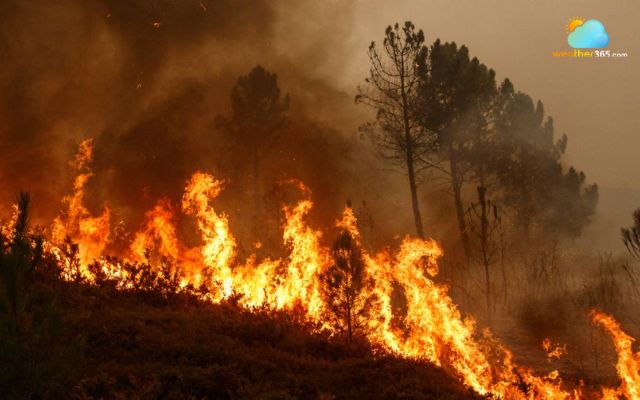
Wildfires have become a critical threat
Causes of Wildfire: Human vs Natural Factors
While lightning is an undeniable cause, human activity is responsible for nearly 85% of wildfires, according to the National Park Service.
Common culprits include unattended campfires, debris burning, powerline failures, electrical malfunctions, discarded cigarettes, and arson.
However, when evaluating the full scope of destruction, lightning-caused fires have historically proven more destructive.
Data from the National Interagency Fire Center reveals that, despite fewer ignitions, lightning accounts for the vast majority of burned acres since 2001, though human-sparked blazes have occasionally consumed more land in specific years.
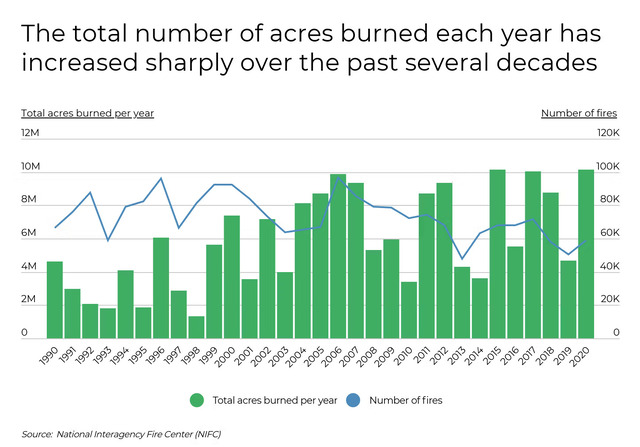
The total acres burned per year ( Source: National Interagency Fire Center)
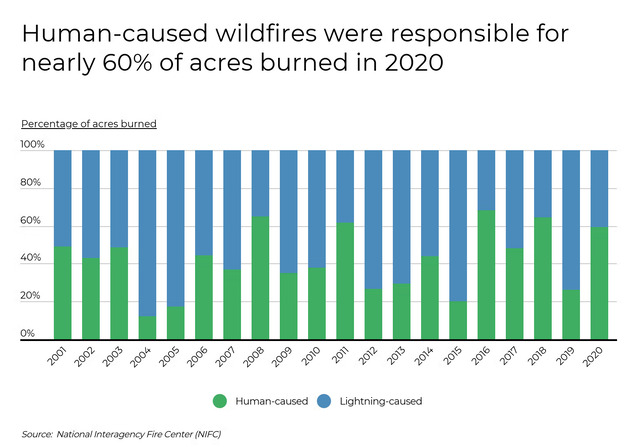
Comparison human human-caused and lightning-caused fires (Source: National Interagency Fire Center)
Wildfire severity is profoundly influenced by climate, and as of 2021, many western U.S. states remain trapped in a persistent "megadrought."
Large areas, spanning parts of Utah, Arizona, Nevada, California, New Mexico, Colorado, and Oregon, are experiencing "exceptional" drought conditions—the most severe category according to the U.S. Drought Monitor.
These extreme dry spells create highly combustible landscapes, fueling more intense and widespread blazes.
You may also like this: What causes Wildfires?
What states have the most wildfires?
California - Most threatened by wildfire
California faces the most significant wildfire threat, accounting for over 40% of all acres burned in 2024.
This makes it the state with the highest number of wildfire-prone properties, with 2.1 million homes at risk.
This figure is nearly triple that of Texas (750,000), Colorado (380,000), and Arizona (250,000), according to the Insurance Information Institute.
However, the impact of wildfires varies significantly across states.
While California has the most at-risk properties, they represent only 15% of the state's total.
In contrast, sparsely populated states like Montana and Idaho, despite having fewer total at-risk properties, have wildfires threaten between one-quarter and one-third of all properties within their borders.
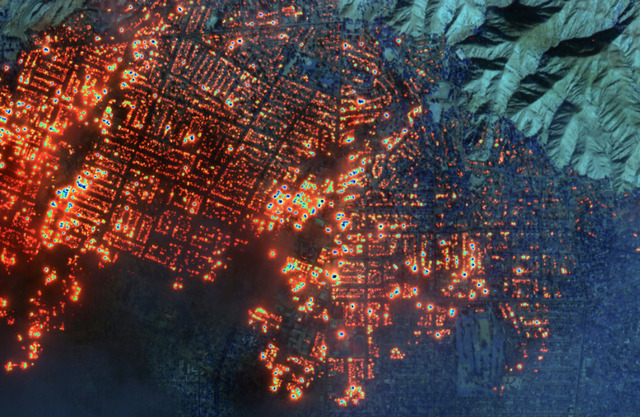
Satellite image of wildfires burning in Southern California
The state's unique geography is characterized by dense wildland-urban interfaces, mountainous terrain, and an abundance of highly flammable vegetation like chaparral.
All create a perfect environment when combined with its Mediterranean climate.
Prolonged dry seasons, exacerbated by megadroughts and increasingly frequent Santa Ana winds, transform these landscapes into tinderboxes.
These powerful, dry winds can rapidly spread embers over vast distances, turning small ignitions into raging infernos almost instantly.
Consequently, California faces not only direct threats to homes and lives but also widespread secondary impacts, including severe air quality degradation that affects millions far from the burn zones, and significant economic burdens from property damage, suppression costs, and recovery efforts.
The state remains a critical focus for wildfire research, prevention, and mitigation strategies, constantly adapting to an evolving and increasingly dangerous wildfire landscape.
US States most impacted by wildfires
Apart from California, many other US states have experienced wildfires.
Here are the 10 states that are hardest hit by wildfires from 2023 to 2024
|
US States |
Number of Wildfires (2023) |
Acres Burned (2023) |
Number of Wildfires (2024) |
Acres Burned (2024) |
|
California |
7,364 |
332,722 |
8,316 |
~1,080,000 |
|
Texas |
7,102 |
210,264 |
4967 |
1,314,903 |
|
North Carolina |
5,214 |
73,953 |
4,668 |
18,233 |
|
Florida |
2,730 |
99,642 |
2,348 |
65,618 |
|
Georgia |
2,386 |
10,330 |
2,492 |
11,896 |
|
Mississippi |
2,383 |
52,508 |
1,800 |
55,880 |
|
Oregon |
1,979 |
202,035 |
2,117 |
1,797,796 |
|
Pennsylvania |
1,910 |
9,628 |
1,448 |
3,792 |
|
Alabama |
1,856 |
18,335 |
1,525 |
20,978 |
|
Arizona |
1,837 |
188,483 |
2,191 |
282,989 |
Also read:
- What is the biggest wildfire in US history?
- What country has the most wildfires?
U.S. states least impacted by wildfires
While wildfires dominate headlines, some U.S. states experience significantly less impact from these destructive blazes.
Generally, states in the Northeast and parts of the Midwest face lower risks due to different climate patterns, higher humidity, and varied vegetation.
These areas often benefit from more consistent rainfall and less expansive wildland-urban interfaces, reducing both ignition likelihood and rapid spread.
In 2023, the District of Columbia had 0 wildfire events. All thanks to its highly urbanized environment with minimal continuous natural wildlands. Its humid climate generally offers more moisture, while a dense network of emergency services ensures rapid suppression of any small ignitions.
Besides, here are the top 5 US states least impacted by wildfire events ( in 2023)
-
Delaware - 1 forest fire in 2023.
-
Iowa - 6 forest fires in 2023.
-
Kentucky - 9 forest fires in 2023.
-
Illinois - 22 forest fires in 2023.
-
South Carolina - 22 forest fires in 2023.
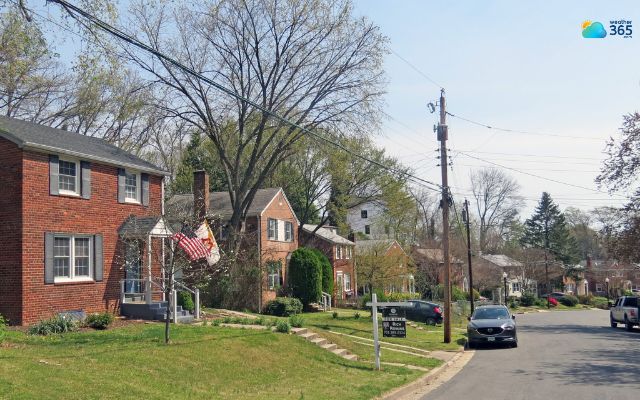
The District of Columbia experiences the least wildfire
What can we do to prevent wildfire?
How to prevent wildfire? Preventing wildfires largely hinges on human responsibility. You can follow some simple regulations, such as extinguishing campfires thoroughly, ensuring vehicles and equipment are well-maintained, and avoiding burning debris on windy days. Create defensible space around your home by clearing flammable materials.
Every careful action helps protect our communities and wildlands from devastating blazes.
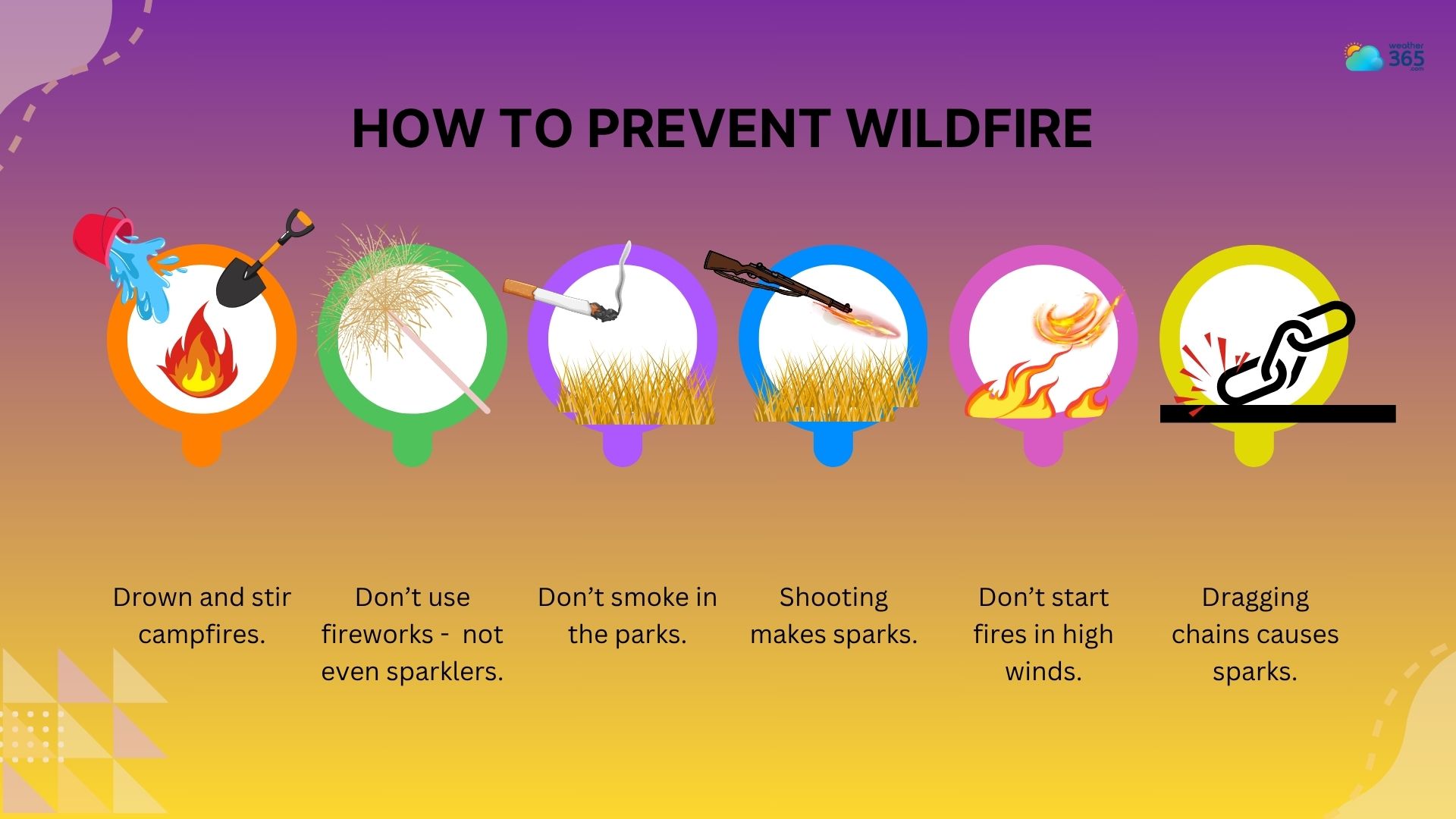
How to prevent wildfires
Conclusion
Understanding what states have the most wildfires is crucial for both prevention and preparedness. By staying informed about the unique challenges faced by each region, we can better protect our communities and wildlands from the increasing threat of these destructive blazes.

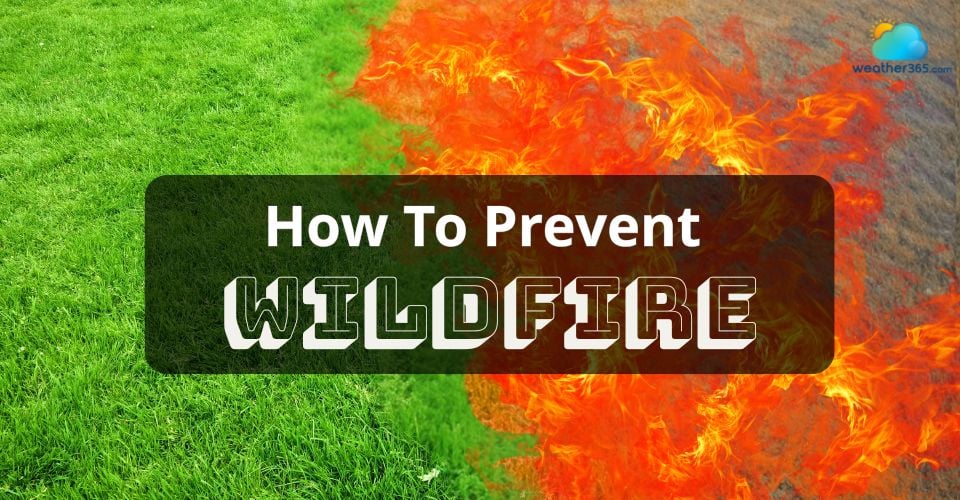
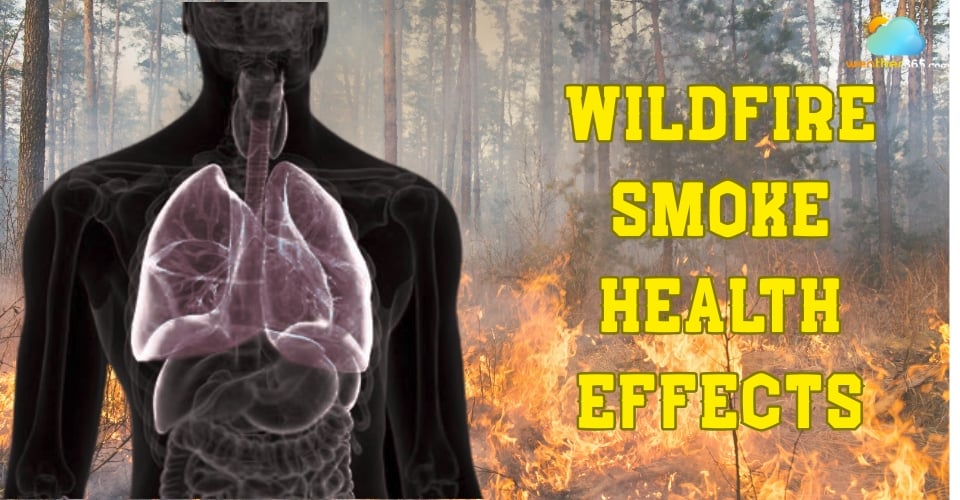

0 Comment
Leave a comment
Your email address will not be published. Required fields are marked *